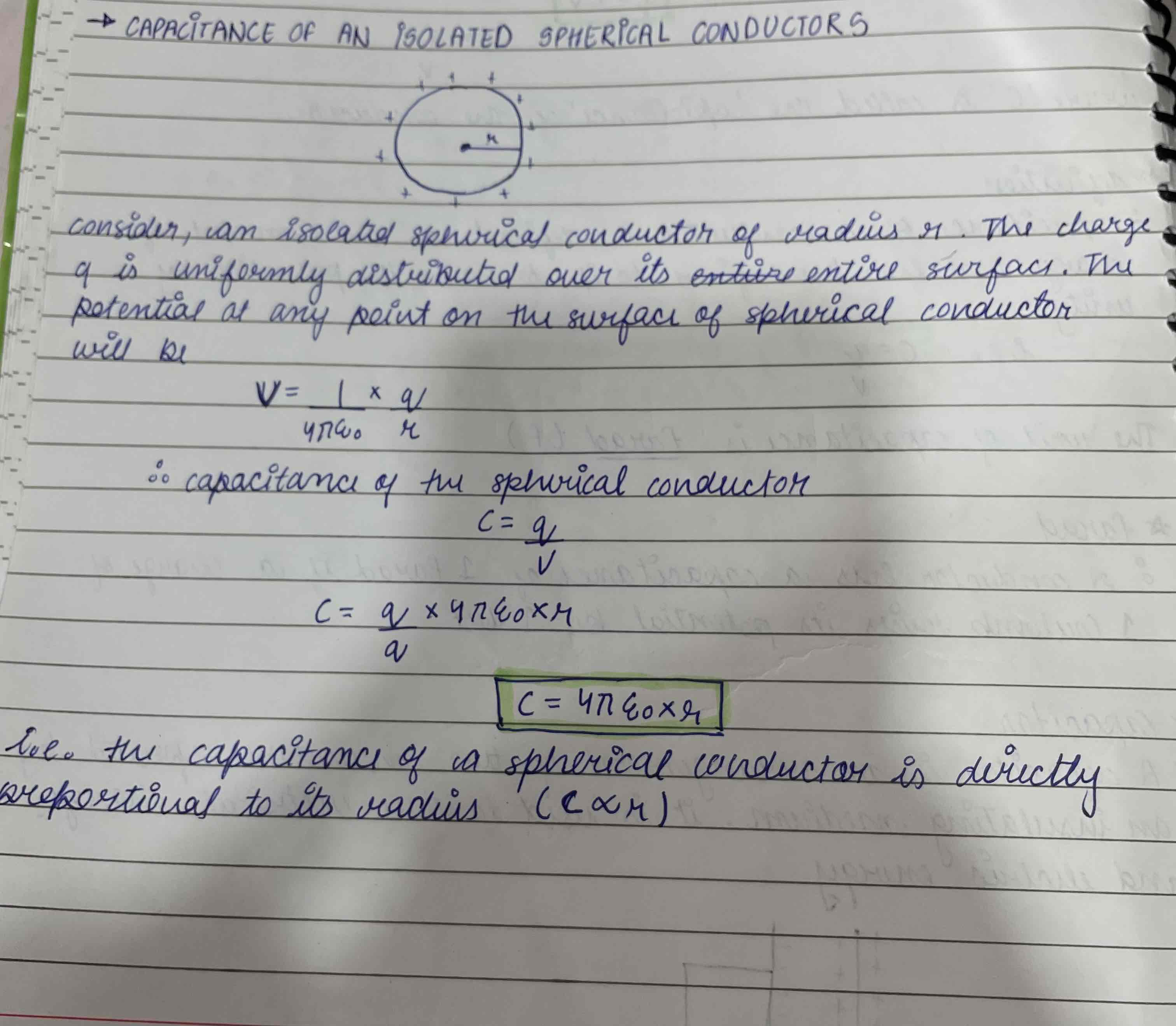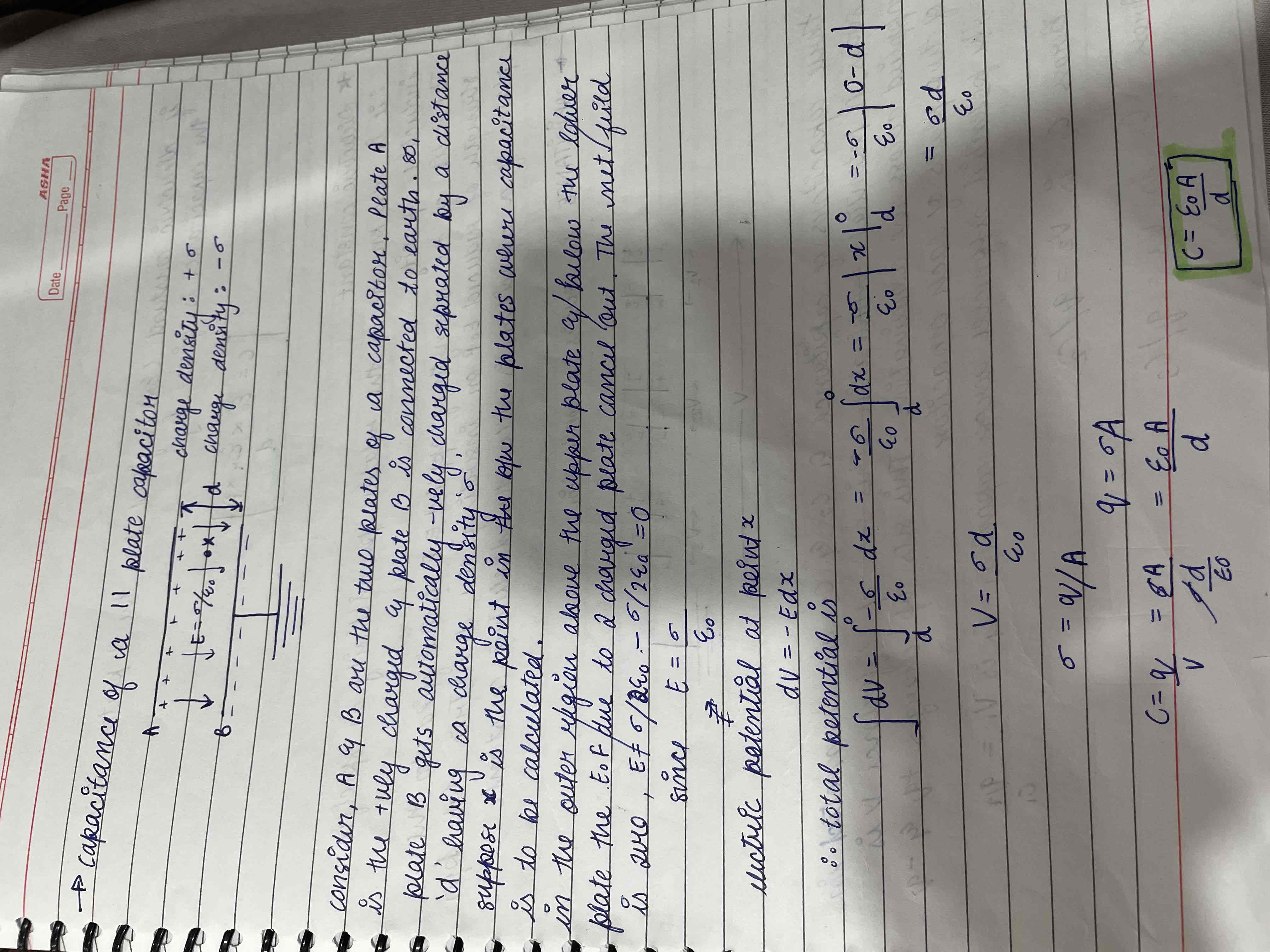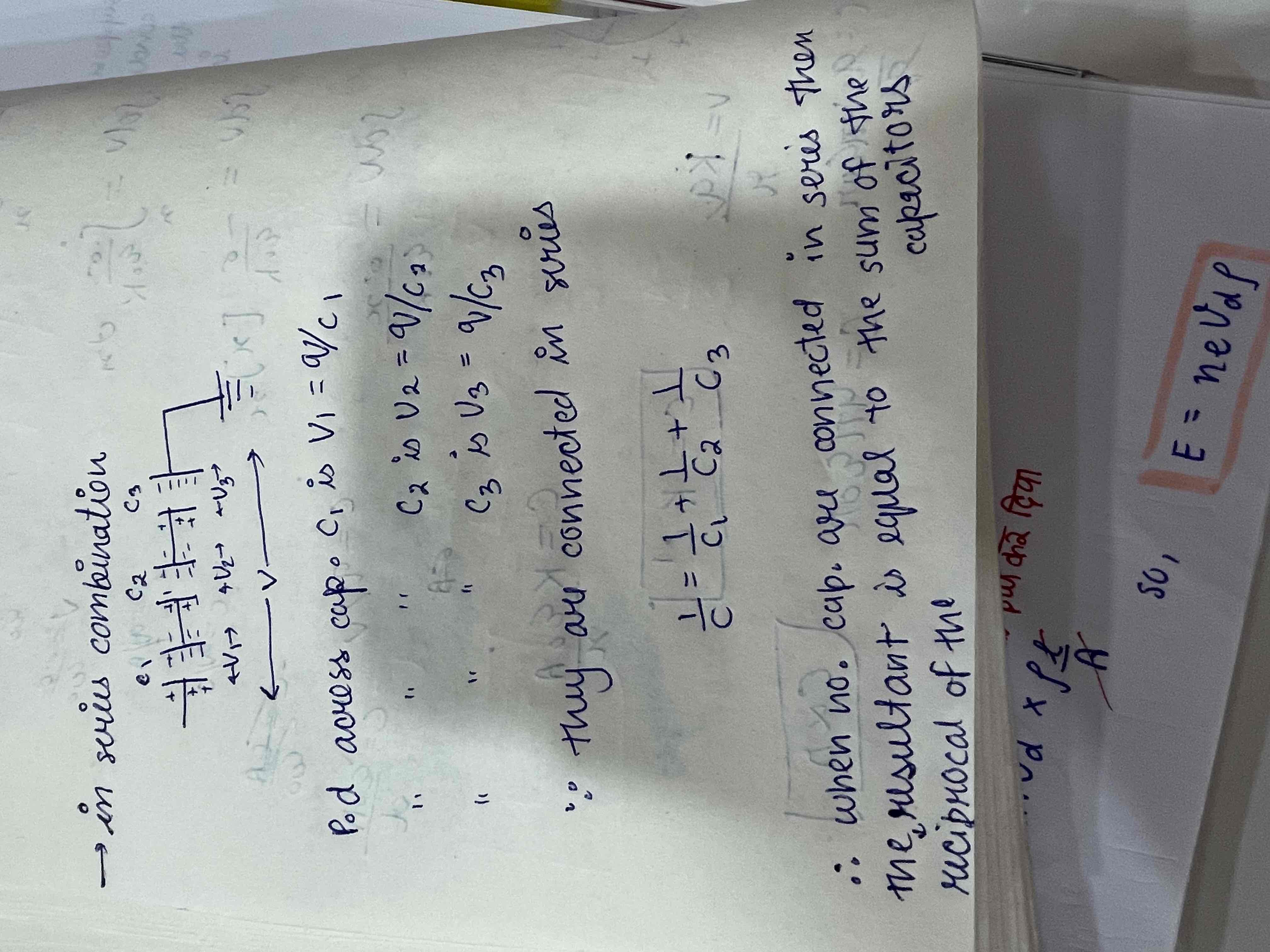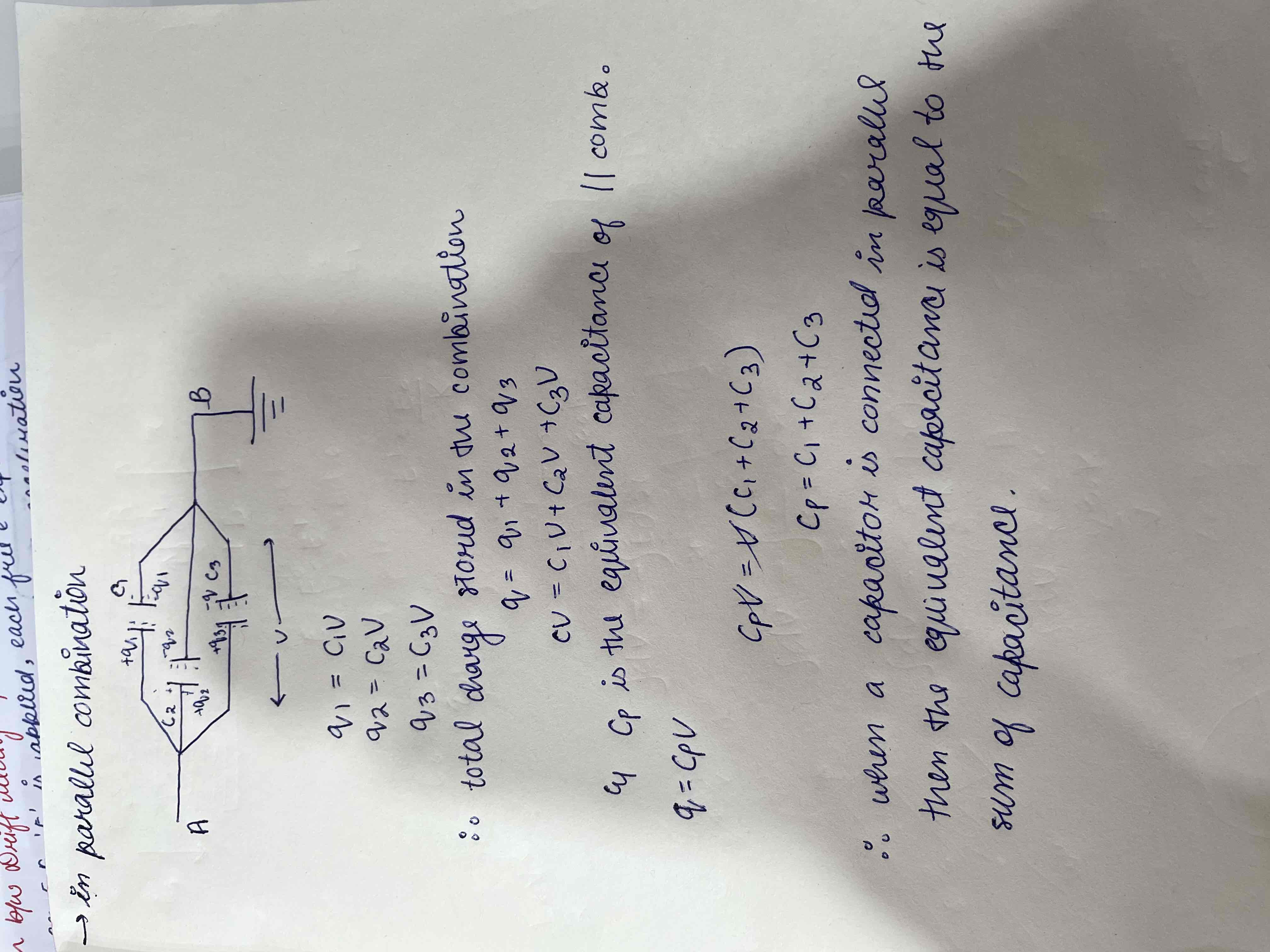Capacitance
1/12
There's no tags or description
Looks like no tags are added yet.
Name | Mastery | Learn | Test | Matching | Spaced |
|---|
No study sessions yet.
13 Terms
What is capacitance?
When charge is gradually increased, so is potential increased, the charge Given of a conductor is directly proportional to the potential.
Q=CV
C. Stands for capacitance.
Capacitance of a conducted is defined as the amount of charge that has been given it to raise its potential by unity
What is a capacitor?
A capacitor is an arrangement of two Conductors separated by an insulating medium. it is used to store electrical charge and energy
Capacitance of an isolated spherical conductor

Capacitance of a parallel plate capacitor

What is dielectric constant?
It is also known as relative permittivity or specific inductive capacity. The ratio of the strength of the applied electric field to the strength of the reduced electric field is due to the introduction of a dielectric slab between the plates of the capacitor is called the electric constant.
Capacitance in series combination

Capacitance in a parallel plate combination

Effect of an electric field and capacitance or a parallel plate capacitor when a dielectric medium is introduced
What is an dielectric?
It is a substance which do not allow the flow of charges, but allows it to exert electrostatic force on each other through it. It is essentially an insulator which can be polarised.
Ex glass wax wood
What is polar?
A dielectric in a atom which the centre of motion of the positive charge does not coincide with the centre of the motion of the negative charge is called polar dielectric and polar Elect - Q and + Q charges have a non-symmetrical charge distribution
What is nonpolar?
A dielectric in the atoms which which the centre of mass of positive charge conside with the centre of mass with the negative charge is called a non-polar in a non-polar, dielectric positive and negative charges have a symmetrical charge distribution
What is polarisation?
It is defined as a dipole moment, per unit, volume and its magnetic is usually referred to the polarisation density. Direction of polarisation is same as that of the external electric field.
Polarisation of dielectric
Both polar and non-polar develops, a net dipole movement in the presence of external electric field. This fact is called polarisation of dielectric